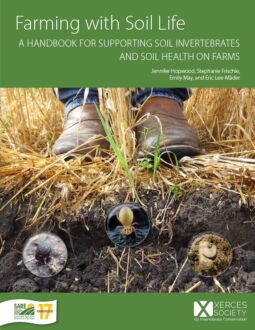SOIL MESOFAUNA are usually 0.007–0.07" (0.2–2 mm) in size. Most of these species live in existing spaces in the soil; potworms move and mix soil somewhat. Many are decomposers, influencing nutrient cycling, and others influence food webs below and above ground. Sampling mesofauna requires specialized collection procedures and microscopic techniques. All of the organisms in the following profiles are in Kingdom Animalia.
Rotifers
PHYLUM: Rotifera ⦆ CLASS: Bdelloidea
SIZE: 0.0039–0.12" (0.1–3 mm).
ECOLOGICAL ROLE: Rotifers are predators and scavengers.
DESCRIPTION: Since rotifers are so small, only a few features are recognizable under a microscope. These features include crowns of cilia on their heads that whirl in circular patterns and are used in swimming and in filter feeding, a set of hard jaws, and a foot that is occasionally used to scoot across surfaces.
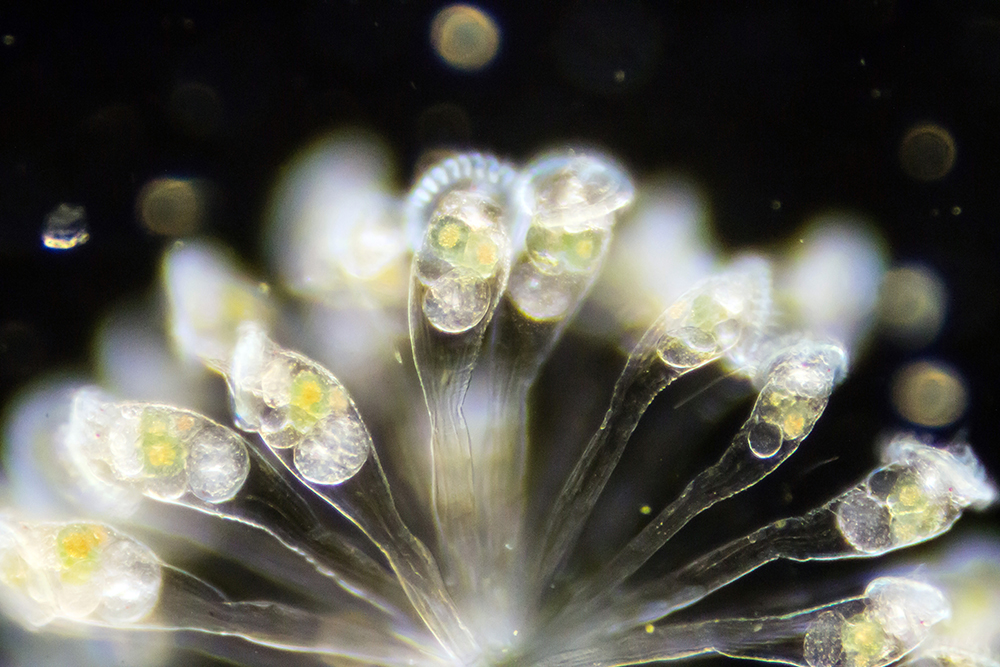
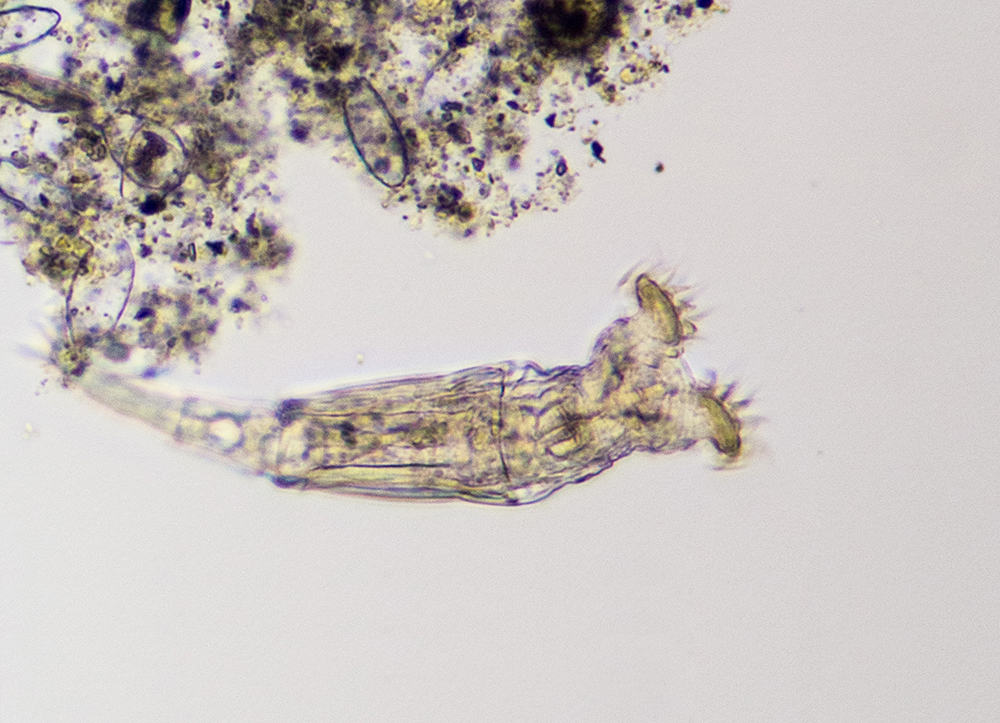
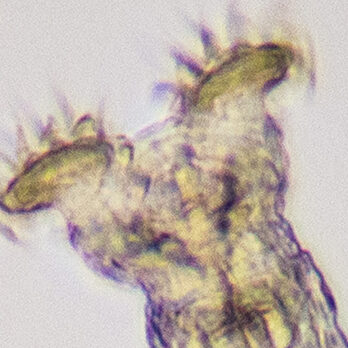
WHERE THEY ARE FOUND: Rotifers are aquatic organisms, but many live in the soil in water films, mostly near the surface. They are also found on mosses or lichens and in leaf litter in forests.
WHAT THEY EAT: Rotifers consume bacteria, protozoa, fungi and algae. They are vortex feeders, using their cilia to create a current to draw in food.
LIFE CYCLE: When water films disappear in the soil, rotifers form cysts, a stage of resting animation while they wait for moisture. This stage allows them to survive dry conditions; they can be transported to other habitats during this stage. Soil rotifers reproduce without sex; males are absent entirely and females reproduce via unfertilized eggs.
APPROX. NUMBER OF KNOWN SPECIES: 2,030 worldwide, with only about 5% found in soil.
RELATIVE ABUNDANCE: They may exceed 100,000 per square meter in moist soils.
NOTES OF INTEREST:
- Their name is derived from the Latin for wheel bearer.
- Their vortex feeding can be readily observed under a microscope.
- Some form shells that incorporate body secretions, debris or fecal material.
- One method for counting protozoans: use a microscope to count protozoans directly from soil samples in a suspension in small wells or in a petri dish.
Tardigrades
PHYLUM: Tardigrada ⦆ CLASSES: Eutardigrada, Heterotardigrada
SIZE: 0.002–0.067" (0.05–1.7 mm).
ECOLOGICAL ROLE: Tardigrades are predators and omnivores in soil food webs.
DESCRIPTION: Earning their nickname “little water bears,” tardigrades have bodies with the appearance of segmentation and eight stubby legs that end in several short claws. They can be brown, white, green, orange, pink or even colorless altogether. They have mouthparts used to pierce food sources and suck out fluids.
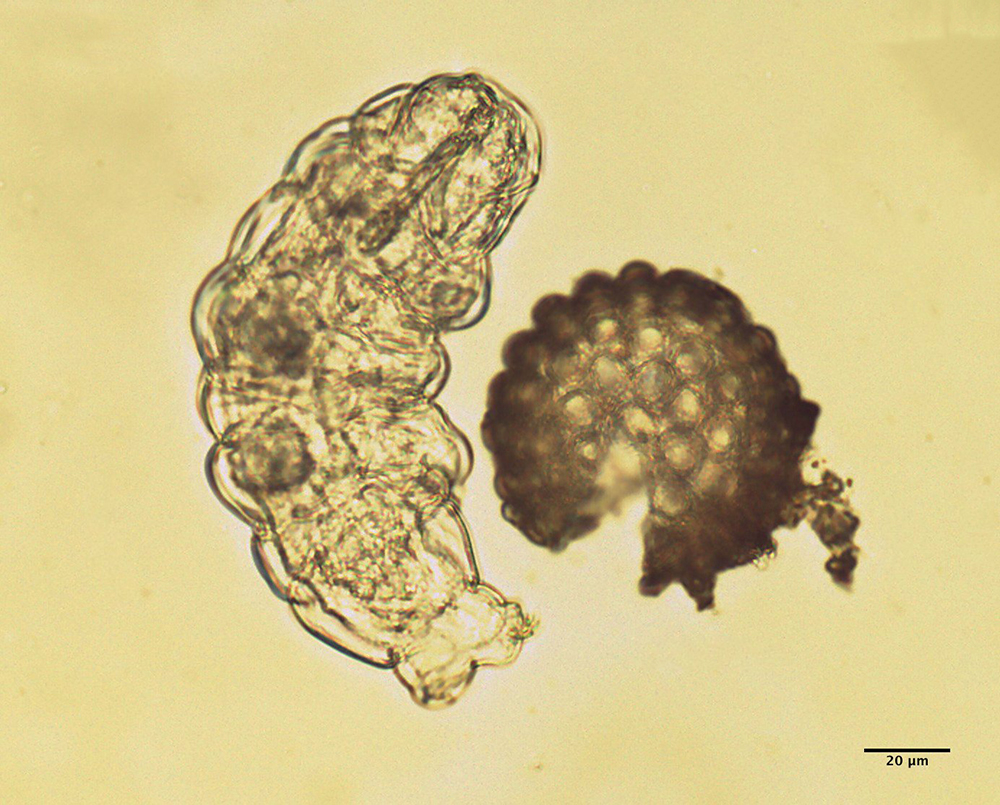
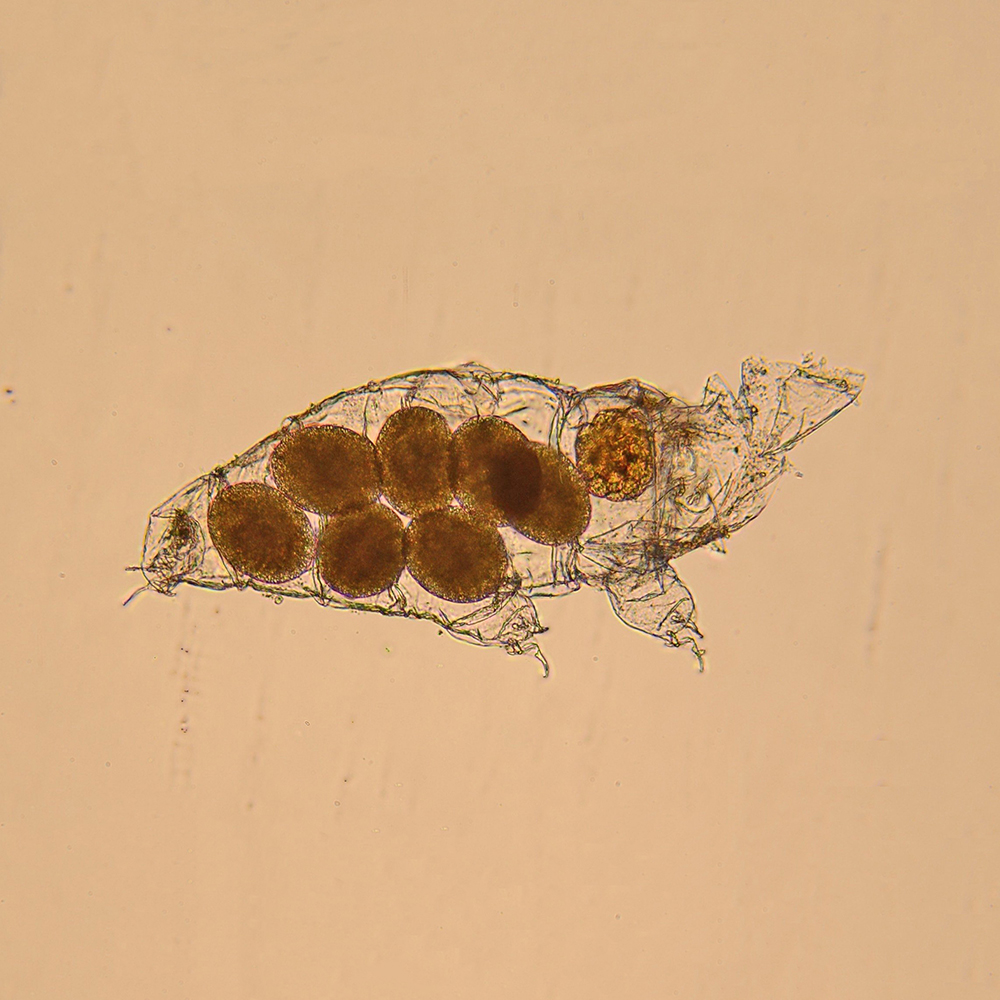
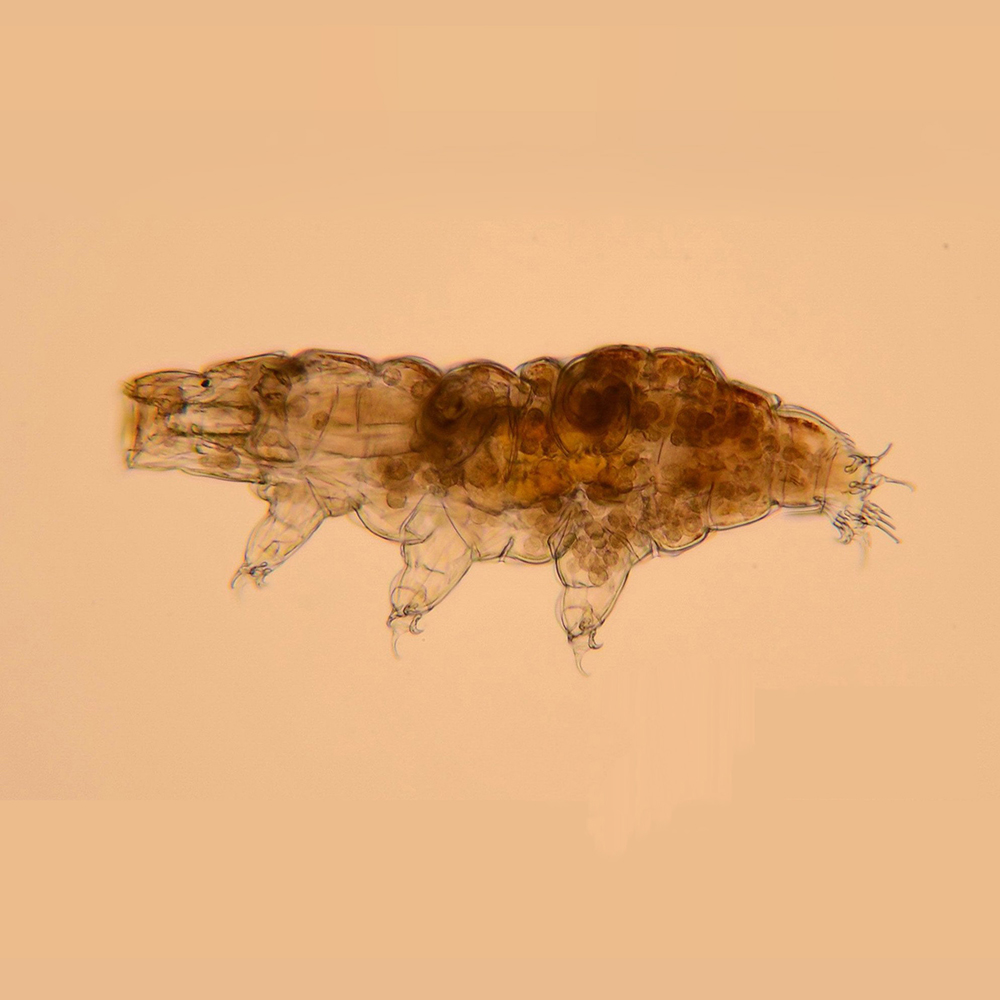
WHERE THEY ARE FOUND: Tardigrades are predominantly found in the top 1" (2. cm) of soil, though some are also found in deeper layers. They can live in leaf litter water—both marine and freshwater—and they occur in just about every habitat from the poles to the equator, including deep seas and mountains.
WHAT THEY EAT: Some are carnivorous, feeding on protozoa, nematodes and rotifer others consume plants, algae or fungi.
LIFE CYCLE: Tardigrade eggs can be ornate, with geometric patterns and spines, ridges and more. In suspended animation, adult tardigrades become shriveled up after losing nearly all the water in their body, a state that closely resembles death. With their metabolism slowed to 0.01% of their normal rate, they only reanimate when in contact with water.
APPROX. NUMBER OF KNOWN SPECIES: 1,500 worldwide.
RELATIVE ABUNDANCE: Tardigrades can be very abundant under certain conditions (when there’s enough moisture, food and proper temperatures), with to approximately 400,000 per square yard.
NOTES OF INTEREST:
- The term cryptobiosis is derived from Greek for hidden (crypto) and life (bios), an apt name to describe the state of an organism when it shows no visible signs of life.
- They may be indicators of environmental stress. Certain species can flourish in certain environments, and tardigrade species richness and abundance can indicate levels of pollution.
- Some tardigrades can be very long-lived. Researchers have reanimated individuals after 30 years of being frozen. (In the 1940s, a researcher claimed to reanimate a tardigrade after 120 years on a moss specimen in a museum, but this hasn’t been replicated).
- Tardigrades were only described about 200 years ago. We still have a lot to learn and there are many undescribed species.
- One reason for interest in tardigrades is to determine if cryptobiosis is a possibility for humans as well.
- Tardigrades can recover after immersion in liquid nitrogen.
- Other common names include moss piglets and slow walkers.
- Tardigrades are resistant to cosmic radiation and vacuums—nearly 70% of tardigrades sent into orbit in 2007 survived the 10-day trip and return to Earth. An Israeli spacecraft carrying thousands of tardigrades in their cryptobiotic state crash-landed on the moon in 2019.
Nematodes (eelworms)
PHYLUM: Nematoda ⦆ CLASSES: Chromadorea, Enoplea ⦆ ORDERS: Aphelenchida, Dorylaimida, Mononchida, Rhabditida, Tylenchida
SIZE: 0.012–0.39" (0.3–10 mm).
ECOLOGICAL ROLE: Nematodes have several roles in soil life based on the foods they eat. They are variously predators, omnivores, fungivores, bacterivores and plant parasites. Additionally, as nematodes move through the soil, they carry and excrete bacteria, helping bacteria to disperse throughout soil layers.
DESCRIPTION: Nematodes are unsegmented, slender worms with an elongated cylindrical body that tapers at both ends. Their bodies are usually somewhat transparent. Their mouthparts are specialized for their eating habits: Those that are predatory have teeth lining their mouth. Root and fungi feeders have needlelike, piercing mouthparts to puncture plants or fungi and withdraw fluids. Bacteria feeders have “lips.”
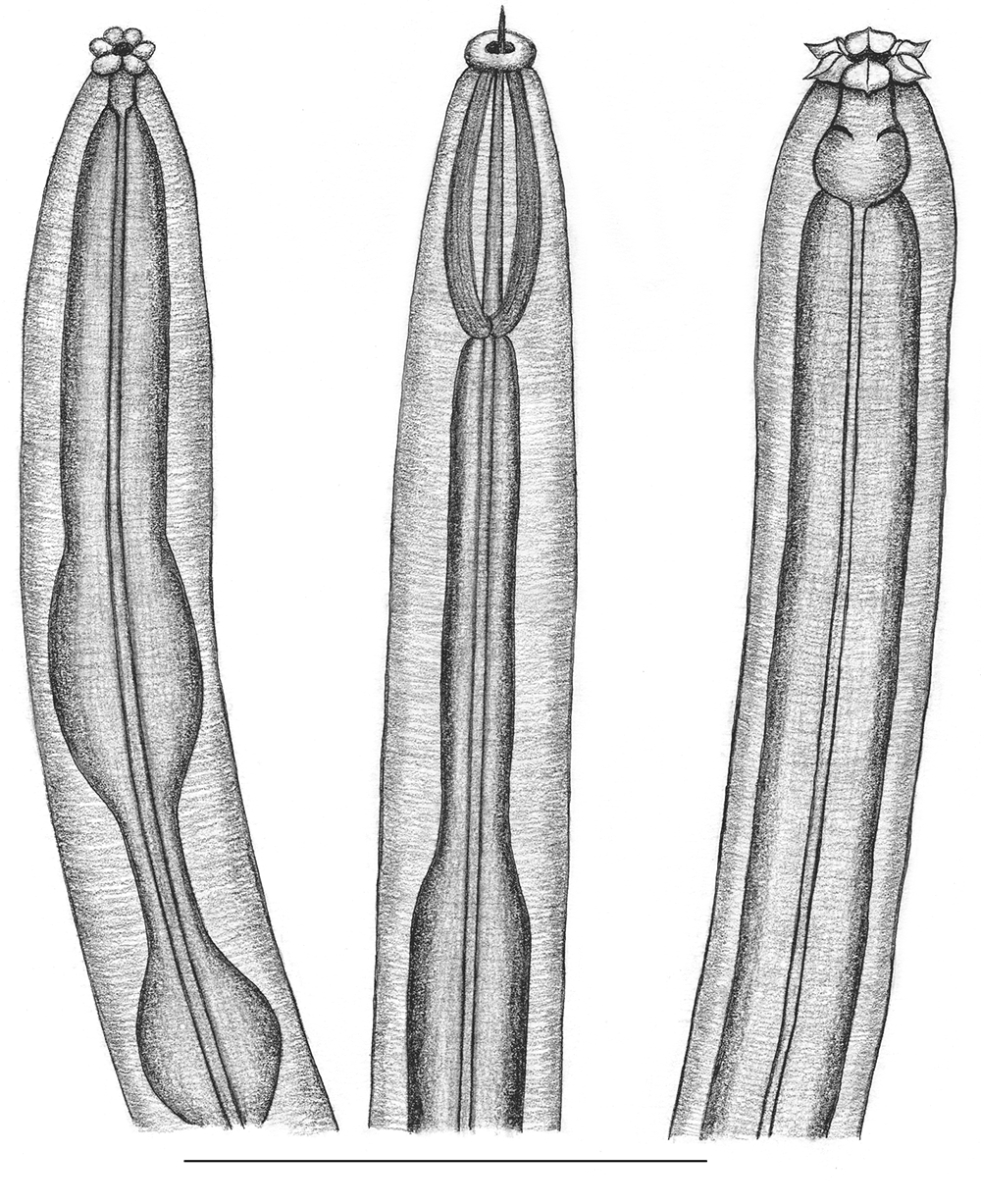
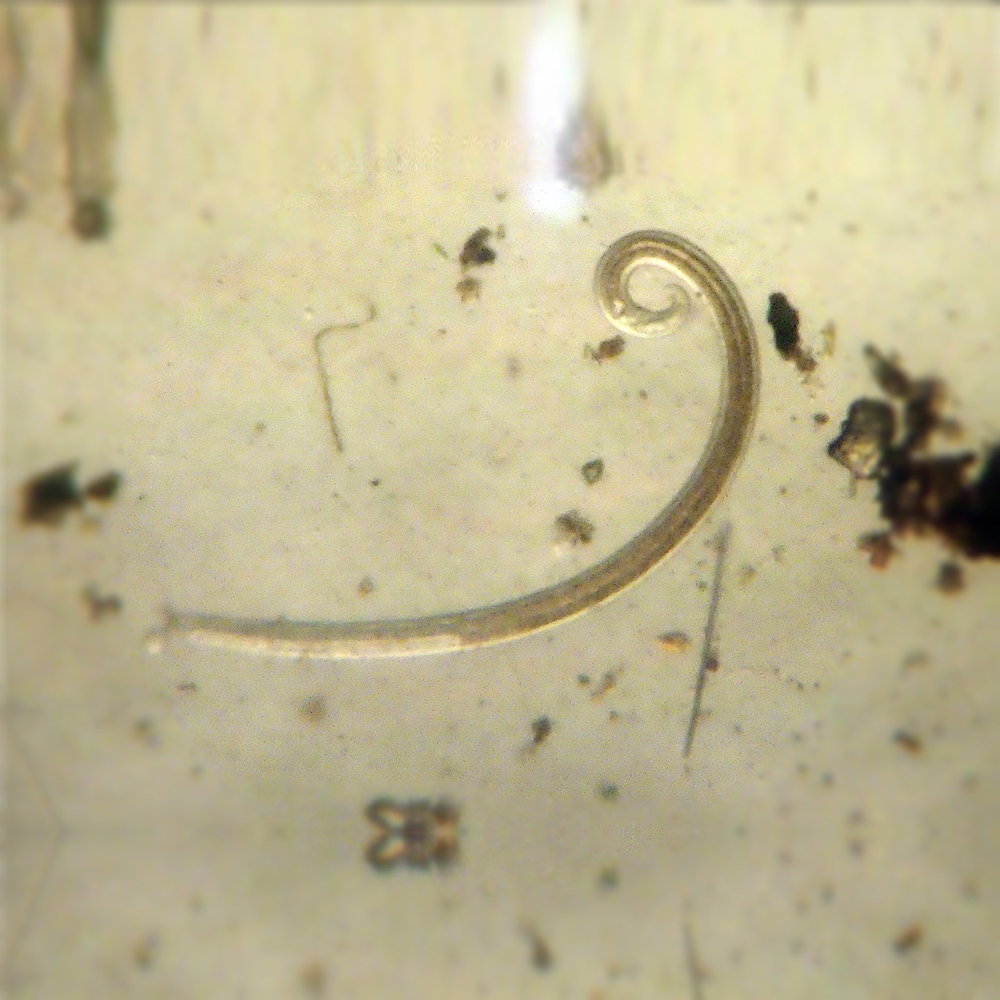
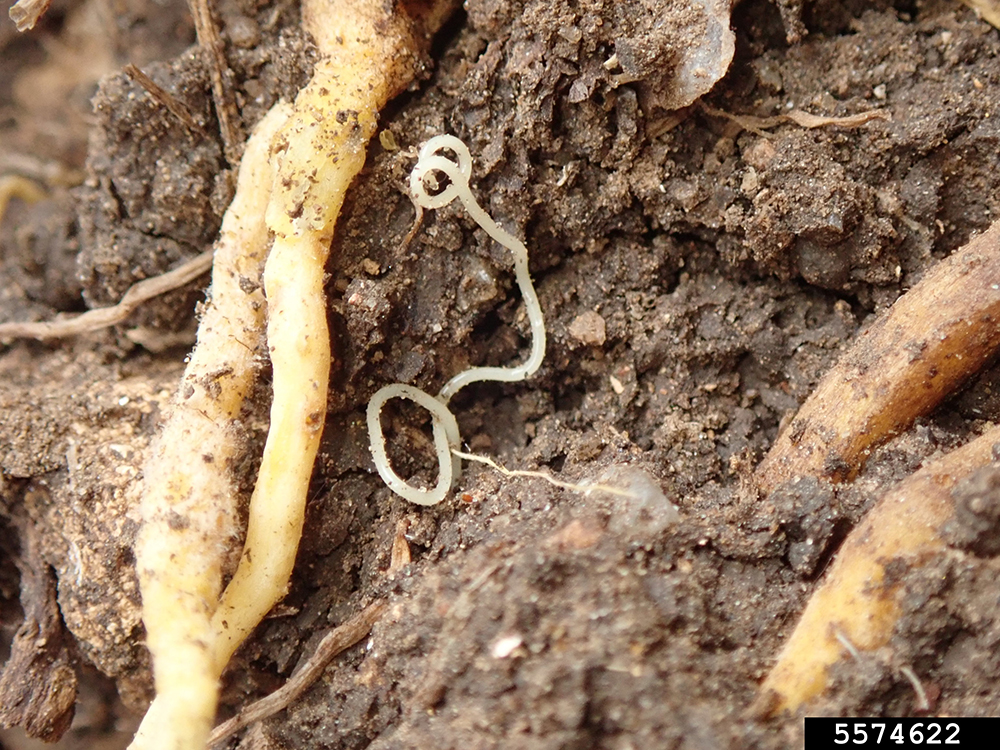
WHERE THEY ARE FOUND: Nematodes are found in all types of soils and habitats, including aquatic environments and even polar regions. However, only a small percentage of species have wide distributions; most are endemic to a region or site. They primarily inhabit water films or water-filled pores in soils.
WHAT THEY EAT: Different groups of nematodes eat different trophic groups: there are bacteria feeders, fungal feeders, plant feeders (feeding on roots or algae) and predators that consume protozoa, rotifers, tardigrades, other nematodes and tiny soil insects.
LIFE CYCLE: Nematodes depend on water films in soil for air-gas exchange. They can survive in harsh conditions, including drought or extreme cold or heat, by entering a dormant state. Many species have males and females, but some are hermaphroditic or parthenogenetic (producing only female through asexual reproduction). Nematodes develop from eggs through four juvenile stages before reaching the adult stage. Some species have quick reproduction while others are longer lived with lower reproduction rates.
APPROX. NUMBER OF KNOWN SPECIES: 25,000 worldwide. Many more remain undescribed.
RELATIVE ABUNDANCE: Nematodes are among the most numerous animals on the planet. Estimates include more than a million individuals per square meter. They are most abundant in grasslands and pasture soils, with estimates of up to 80 billion per acre; cultivated fields support about eight billion individuals per acre. Predatory fungal-feeding nematodes are less abundant in disturbed soils.
NOTES OF INTEREST:
- Nematodes are also called eelworms and occasionally referred to as roundworms, though the latter can also refer to a specific group of nematodes that are internal parasites of humans, pets, livestock and other animals.
- Nematodes can be indicators of environmental quality. Species that reproduce quickly following the addition of nutrients are considered colonizers, while longer-lived species with low reproduction rates are deemed persisters.
- Some have been found feeding on bacteria in soil as deep as 2.2 mi. (3.5 km), deeper than any animal.
- Plant-parasitic nematodes can cause serious economic damage to crops, especially corn, soybean, rice and citrus.
- Some soil fungi trap and consume nematodes
- Some nematodes are intestinal parasites in humans and are the source of human health issues (e.g., hookworm, Guinea worm and filarial worm that causes elephantiasis). A number of species parasitize other vertebrates, and some also parasitize invertebrates.
- Dr. N. A. Cobb wrote in the 1914 Yearbook of the United States Department of Agriculture, “If all matter in the universe except the nematodes were swept away, our world would still be dimly recognizable… We should find its mountains, hills, vales, rivers, lakes, and oceans represented by a film of nematodes… We must therefore conceive of nematodes and their eggs as almost omnipresent.”
- Nematodes are very resilient; species taken onboard for study survived the 2003 NASA space shuttle Columbia crash.
- Some nematodes can survive long-term exposure to cold, dry conditions. In 1945, scientists revived five individuals of the species Tylenchus polyhypnus from a rye leaf of a 39-year-old herbarium specimen. Plectus murrayi nematodes were revived from Antarctic moss specimens after 25 years of storage. Samples of Pleistocene permafrost from 32,000–42,000-year-old glacial deposits contained viable soil nematodes (Panagrolaimus spp. and Plectus spp.), indicating that such organisms can survive tens of thousands of years of cryptobiosis.
- Baermann funnels can be used to extract nematodes from soil samples.
Potworms
PHYLUM: Annelida ⦆ CLASS: Clitellata ⦆ ORDER: Haplotaxida ⦆ FAMILY: Enchytraeidae
SIZE: 0.039–1.18" (1–30 mm).
ECOLOGICAL ROLE: Potworms influence soil primarily through their feeding and increase the integration of organic matter and minerals. Potworms may also increase soil porosity, proportionate to their body size. In addition to their role as ecosystem engineers, potworms are important decomposers and consumers of plant material, fungi and bacteria.
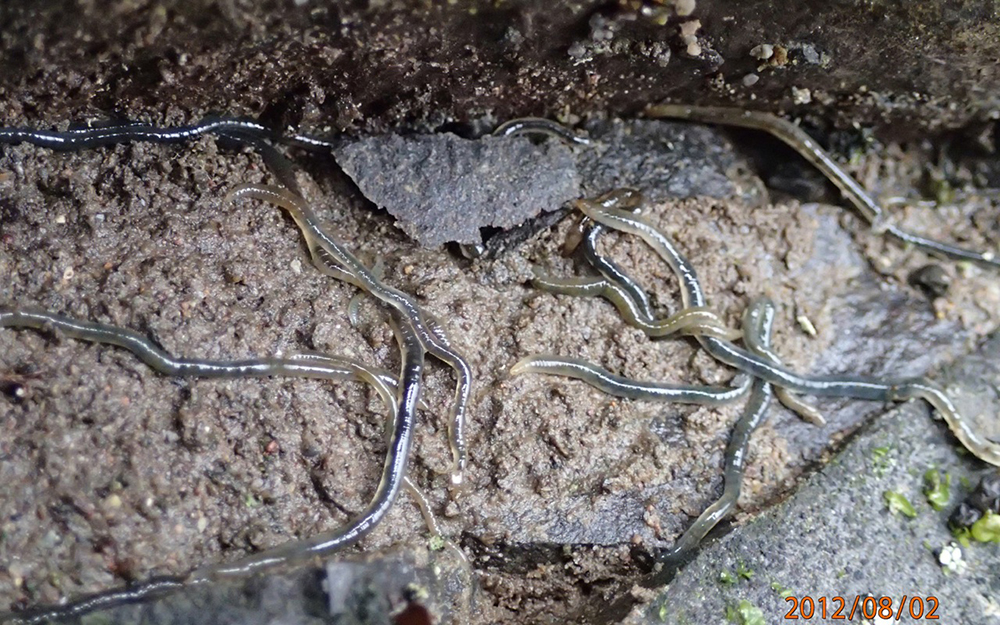
DESCRIPTION: Potworms are similar in shape to earthworms, though smaller overall. They are unpigmented, and each segment has a bundle of bristles used to anchor to surfaces.
WHERE THEY ARE FOUND: Potworms occur primarily in soils that have lots of decaying matter and are most common in the upper soil layer, about 0.39" (5 cm) deep. These worms also seem to prefer acid soils.
WHAT THEY EAT: Potworms consume fungi, bacteria, decaying organic material such as litter or roots, and fecal matter of soil macrofauna. Potworms also ingest minerals and soil particles.
LIFE CYCLE: Individuals are hermaphroditic, possessing both female and male reproductive organs. Potworms can reproduce by mutually exchanging sperm and eggs, through parthenogenesis, or by completely regenerating from pieces broken from their body. Potworms lay eggs in cocoons that are formed by secretions, and newly hatched individuals mature after 65 to 120 days.
APPROX. NUMBER OF KNOWN SPECIES: 700 worldwide. (177 in North America). Many more species remain undescribed.
RELATIVE ABUNDANCE: One estimate puts about 400 million potworms in an acre of grassland soil. In heavily cultivated soil, densities are lower (less than 1,000 individuals per square meter) compared with uncultivated soils (140,000 individuals per square meter in a peat bog in the United Kingdom).
NOTES OF INTEREST:
- Ice worms (Mesenchytraeus spp.) live in glaciers and cannot survive at temperatures much above freezing.
- Their common name apparently is derived from their first discovery in flowerpots.
- They can be sampled using a soil core and a Baermann funnel.
This material is based upon work that is supported by the National Institute of Food and Agriculture, U.S. Department of Agriculture through the Sustainable Agriculture Research and Education (SARE) program. Any opinions, findings, conclusions, or recommendations expressed in this publication are those of the author(s) and should not be construed to represent any official USDA or U.S. Government determination or policy.
